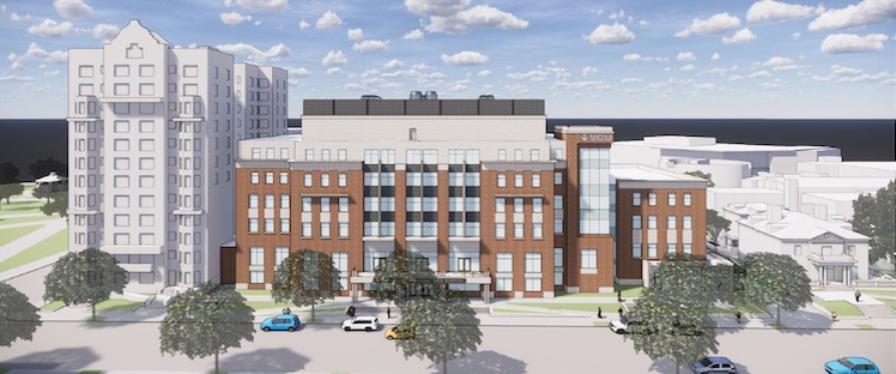State approves funding to build new $121M STEM education facility
May 6, 2019

The state budget signed Thursday, May 2nd by Gov. Ralph Northam includes funding for Virginia Commonwealth University to construct a $121 million 168,000-square-foot, six-floor building dedicated to science, technology, engineering and math education on the Monroe Park Campus.
The building, which will house lab, classroom and office space for the College of Humanities and Sciences, will be built at the site of the Franklin Street Gym, which is slated for demolition starting in spring 2020. “The new STEM facility will provide a state-of-the-art learning, research and collaboration space in a location that is in the heart of the student community,” said VCU President Michael Rao, Ph.D. “I am grateful to the General Assembly for their support. Their funding of the project speaks to their belief in VCU’s educational mission and the commonwealth’s goal to become the best-educated state by 2030.”
The building will expand existing lab space, facilitate innovative and flexible teaching methods, provide students with instructional and study spaces, and free up space in other College of Humanities and Sciences buildings to better serve students and faculty. It will include 34 teaching labs; the Math Exchange, an innovative facility for math instruction; a Science Learning Center; two large-capacity classrooms; computer labs; and large- and small-capacity flexible classrooms. It will feature instructional wet and dry labs and classrooms for teaching chemistry, biology, physics, math, psychology and kinesiology.
“The new building will help enhance the academic success of our students by providing the laboratories where students can put to practice the knowledge acquired during the lectures,” said Montse Fuentes, Ph.D., dean of the College of Humanities and Sciences. “This space is essential to provide experiential learning opportunities to our students, facilitate both innovative and flexible teaching methods, and provide students with both instructional and study space that will prepare them to become indispensable to our society.” The building will provide easy and immediate access to STEM courses and labs, and will help students in the College of Humanities and Sciences reduce the time needed to fulfill degree requirements, thereby also reducing student debt incurred, Fuentes said.
More than 15,000 students take STEM classes annually in the College of Humanities and Sciences. Lab usage on campus exceeded 80 percent of optimal usage, according to data as of October 2018. Introductory biology labs saw 129 percent of optimal usage, while physics labs saw 120 percent lab usage and introductory chemistry and organic chemistry saw 116 percent. By adding lab and classroom space, the STEM building will make it easier for College of Humanities and Sciences students to get the required courses and labs for their majors, thereby reducing attrition and improving the number of STEM graduates.
The building will be designed by Ballinger and Quinn Evans Architects and constructed by Hourigan.